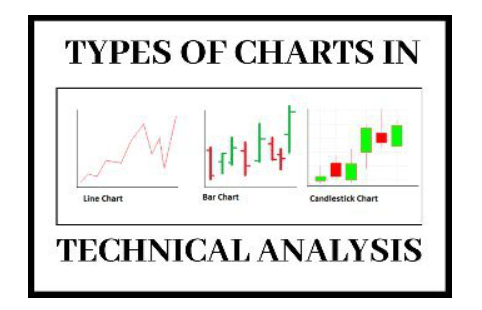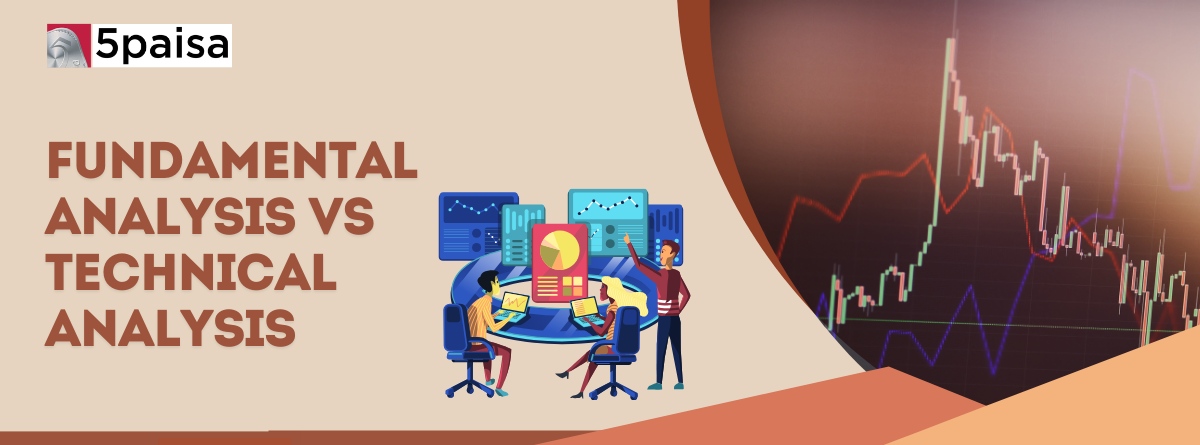Content
Fundamental or Technical - Which Analysis is Better?
Fundamental analysis is based on evaluating economic factors such as the price of a company's assets, its sales and profit record and its dividend payout ratio.
Technical analysis is based on charting and other mathematical techniques used to evaluate the stock's price movements.
We will attempt to answer in this article: which type of analysis is better?
Unlock the full article - sign in with Gmail!
Expand Your Market Knowledge with 5paisa Articles
Fundamental Analysis vs Technical Analysis- The power of mixing the two
Ultimately, nothing beats an in-depth analysis, as both methods can provide some valuable insights. But as many traders will tell you, some technical indicators are compelling and can make a world of difference for your trading decisions. After all, even though you know that fundamentals matter, there is always some news that can send prices skyrocketing or crashing.
We need to establish how accurate each method is and how frequently they provide winning signals. A series of backtests can be performed on both strategies to determine their accuracy and profitability over various periods - anywhere from three months to five years.

Source: online trading
There will be no significant difference between the two methods when it comes to accuracy. The technical strategy will be slightly less profitable than the fundamental strategy over the three years, but it won't be an enormous difference.
The choice between fundamental and technical analysis is a false dichotomy. No one can predict the future, so any research is fundamentally technical.
Fundamental analysis is based on the premise that if you study a company well enough, you can tell whether it will be successful in the future. Technical analysis is based on the belief that past prices contain all the relevant information about a company.
Use both fundamental and technical analysis to make the best investment decisions
Both are right. You can't beat the market without doing fundamental analysis because the market is always right. And you can't beat the market without doing technical analysis because markets are always efficient.
The forces of competition ensure that no business can long go against the fundamentals. The forces of competition also ensure that all public information about a company quickly gets reflected in its stock price. So there's never any need to seek out insider information or rely on corporate policies to move prices in your favour.
Fundamental analysis helps you identify deep demand drivers, but technical analysis gives you triggers to act upon. Use both together to be more informed.
Fundamental drivers of price- The Basics of Fundamental and Technical Analysis
Identifying a stock that meets all the criteria for being a good investment is only the beginning. Should that stock be bought now, or should it be purchased later? Should it be bought at all, or should something else be purchased instead?
The answers to these questions depend on information not directly related to the company. This information is called technical analysis. Fundamental analysts dismiss technical analysis as too complex, too risky, and too vague.

Source: stock market trading app
Technical analysts dismiss fundamental analysis as too simplistic, missing the forest for the trees, and overly focused on numbers that are often misleading because they are not appropriately adjusted for inflation.
Fundamental analysts are right to focus on the quality of the stock itself. If you are going into an investment blind, then you are asking for trouble. But if you have done your homework correctly by identifying a good company with solid growth prospects, then doing some tests to see whether its share price is well supported makes sense.
Why would you make an expensive purchase of a stock that might go down instead of up?
Technical analysis has its place, but it's not what most people think it is. Rather than finding patterns in past prices to predict future prices, which doesn't work anyway, technical analysis measures market sentiment to see whether it is bullish or bear.
Value of technical indicators- The Basics of Fundamental and Technical Analysis
Fundamental analysis is based on the idea that you can identify fundamentally more vital companies than their competitors and buy them when they are cheap. Technical analysis, or charting, is based on the idea that historical price patterns repeat themselves. If you can find a historical pattern, you can use it to predict future price movements.
Fundamentalists say technical analysis doesn't work because fundamentals determine prices, not by emotions. But this misses an important point - price movements are not random. Market psychology may be irrational, but the signs are not arbitrary. Because of this, it is possible to make predictions about future price movements using technical chart patterns even though it may be impossible to do so using fundamentals alone.

Source: free demat account
Technical traders dismiss fundamental analysis saying it is out of date by the time it is published. They say it takes time for changes in economic conditions to affect prices so no one can know what the market will do next.
The truth is that both approaches have value, and neither approach alone is sufficient for successful investing.

Technical Analysis or Fundamental Analysis, which is better?
The question of whether fundamental analysis or technical analysis is better has been debated for decades.
Fundamental analysis is the process of evaluating security based on its intrinsic merit. It includes all aspects of a business that can be analyzed, including the marketplace, competition, management, financial reports and the balance sheet.
Fundamental analysts believe that prices will move concerning underlying fundamentals of a company, market or economy. They are concerned with long-term factors such as growth potential and the ability to manage through economic cycles.

Source: online trading app
Technical analysis is the study of price movement without regard to the fundamentals of a company or economy. Technical indicators are used to assess the current direction of the stock's price movement and anticipated future performance.
Technical analysts look for patterns in stock charts that can be used to predict future price movements, knowing full well that some designs are better than others at predicting future price movement.
Wrapping Up
The debate between fundamental and technical analysis centres on which approach provides investors with better results over time. Supporters of both disciplines have reams of studies supporting their process; however, there is no clear-cut answer to this debate.
Many professional investors use both fundamental and technical analysis when making investment decisions; however, most members of the general investing public tend to rely heavily on one discipline.








